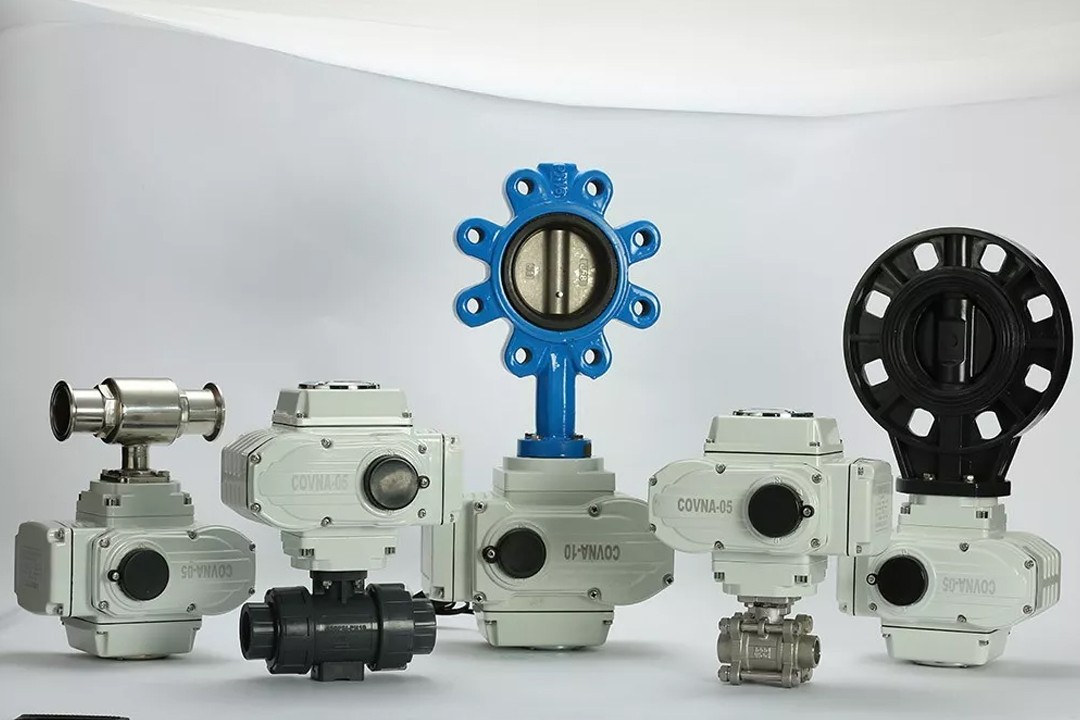An electric valve actuator is a mechanical device that uses electrical energy as its primary power source to drive a valve. Selecting the right electric actuator is crucial, as an incorrect choice may result in the valve failing to operate properly. The selection process should consider the following five aspects.

1. Determine the Control Mode Based on Process Control Requirements
Electric actuators are generally categorized into two main control modes: on-off (open-loop control) and modulating (closed-loop control).
1.1 On-Off Type (Open-Loop Control)
On-off electric actuators control the valve to either fully open or fully close positions, without the need for precise flow control. Notably, on-off electric actuators can be further divided into split-type and integrated-type structures, which must be clearly specified during selection to avoid mismatches with the control system during installation.
a) Split-Type Structure
Commonly referred to as the conventional type, where the control unit and the electric actuator are separate. The actuator itself cannot control the valve independently and requires an external control unit, typically in the form of a controller or control cabinet.

Disadvantages: Inconvenient system integration, higher wiring and installation costs, and more prone to failure. When failures occur, troubleshooting and repairs can be complicated, making this option less cost-effective.
b) Integrated-Type Structure
Often called the "all-in-one" type, where the control unit and electric actuator are integrated into a single package. No external control unit is needed, and the actuator can be operated locally, with remote operation requiring only basic control signals.
Advantages: Easy system integration, reduced wiring and installation costs, and easier fault diagnosis and troubleshooting. However, traditional integrated actuators also have shortcomings, leading to the development of intelligent electric actuators, which will be discussed later.
1.2 Modulating Type (Closed-Loop Control)
Modulating electric actuators not only feature an integrated structure like on-off actuators but also provide precise control of the valve position and medium flow rate. Below are key parameters that need to be specified when selecting a modulating electric actuator:

a) Control Signal Type (Current, Voltage)
Common control signals include current signals (4–20mA, 0–10mA) and voltage signals (0–5V, 1–5V). The type and parameters of the control signal must be clearly specified during selection.
b) Operating Mode (Power-to-Open, Power-to-Close)
Modulating electric actuators typically operate in either power-to-open or power-to-close modes.
For example, in a 4–20mA control system:
• Power-to-Open: 4mA corresponds to valve closed, 20mA corresponds to valve open.
• Power-to-Close: 4mA corresponds to valve open, 20mA corresponds to valve closed.
The operating mode should be clearly defined, as some products cannot be modified after manufacturing. However, COVNA's intelligent electric actuators allow on-site configuration to switch between modes at any time.
c) Fail-Safe Positioning
Fail-safe positioning determines the valve’s position when the control signal is lost due to wiring failure or other issues. Common fail-safe options include:
• Fully open
• Fully closed
• Hold last position
Many actuators do not allow modification of fail-safe settings after manufacturing. However, COVNA's intelligent electric actuators allow flexible on-site configuration and can be set to any desired fail-safe position.

2. Determine the Required Torque Based on the Valve's Operating Torque
The required torque to operate the valve determines the torque rating of the electric actuator. This value is typically provided by the valve manufacturer. Since different valve manufacturers have varying levels of machining precision and assembly quality, the torque requirement may differ even for valves of the same size and specifications.
Selecting an actuator with insufficient torque may result in failure to fully open or close the valve. Therefore, it is essential to choose an electric actuator with a properly rated torque range to ensure reliable operation.
3. Select the Electric Actuator Based on the Valve Type
Different types of valves operate on distinct principles, such as rotary motion or linear motion, and the actuator must be chosen accordingly.
3.1 Quarter-Turn Electric Actuators (Rotation < 360°)
These actuators have an output shaft that rotates less than one full turn (typically 90°) to open or close the valve. They are categorized into two installation types:

a) Direct-Mount Type: The actuator output shaft is directly connected to the valve stem.
b) Base & Lever Type: The actuator output shaft connects to the valve stem through a lever mechanism. This type is commonly used for butterfly valves, ball valves, and plug valves.
3.2 Multi-Turn Electric Actuators (Rotation > 360°)
These actuators require multiple full rotations to fully open or close the valve. They are mainly used for gate valves and globe valves.
3.3 Linear Electric Actuators (Linear Motion)
These actuators provide linear movement rather than rotation. They are typically used for single-seat control valves, double-seat control valves, and similar applications.

4. Choose the Enclosure Protection and Explosion-Proof Rating Based on the Application
a) IP Protection Rating: Specifies the level of protection against dust and water.
b) Explosion-Proof Rating: Required for hazardous environments where explosive gases or dust may be present.
5. Determine Electrical Parameters Based on the Selected Actuator
Different actuator manufacturers provide varying electrical parameters, which must be carefully specified during selection to avoid mismatches that could lead to system failures, such as circuit breaker trips or blown fuses. Key electrical parameters include:
• Motor power rating
• Rated current
• Secondary control circuit voltage
Conclusion
That concludes today’s discussion on electric valve actuator selection. Choosing the right actuator involves understanding control modes, torque requirements, valve compatibility, environmental conditions, and electrical parameters.
For more information on COVNA electric valve products or consultation, feel free to leave a comment below or follow us for updates!













